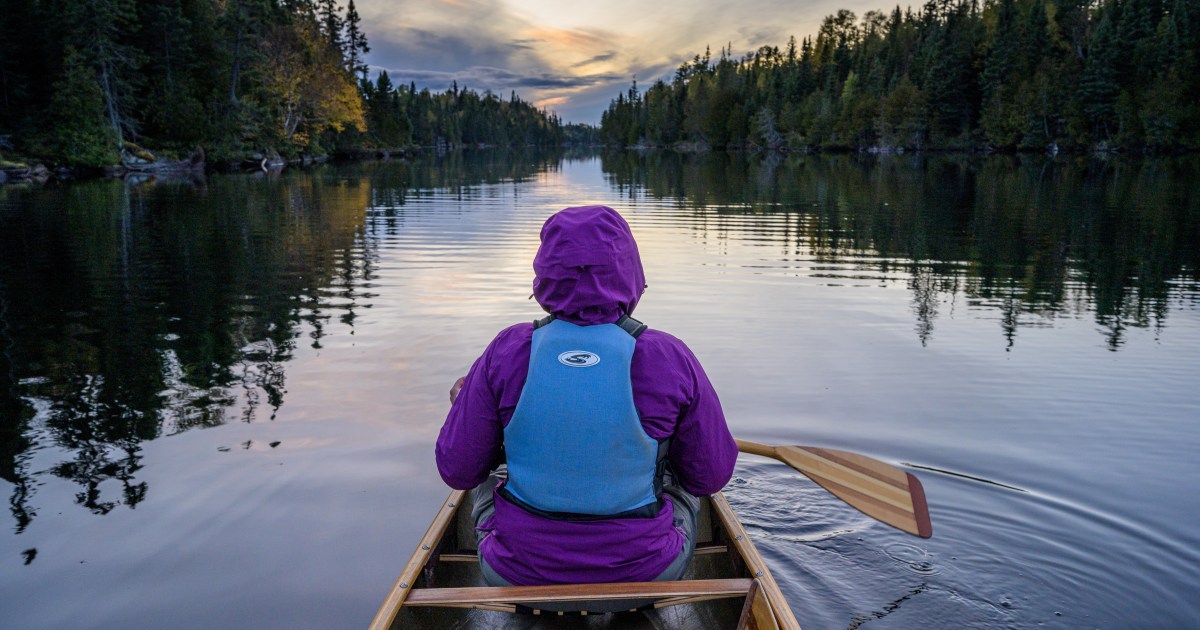Northern Indigenous communities in Sask. face rising COVID-19 cases
Communities in the Lac La Ronge Indian Band in northern Saskatchewan have high vaccination rates, but despite that, they’re facing more new cases of COVID-19 — the first signs of the pandemic’s fifth wave in Saskatchewan’s north.
The Omicron coronavirus variant has already shattered pandemic records in Saskatchewan. Case rates were relatively low in northern Indigenous communities — but that feeling of security is fading.
“We are aware that the Omicron variant is making an impact, not only in the province … but including in our communities,” said Chief of the Lac La Ronge Indian Band, Tammy Cook-Searson.
6:27Lac La Ronge Indian Band celebrates uptick in vaccination rates
We heard a lot at the beginning of the vaccine rollout that some northern communities were having a sluggish uptake. Now, thanks to public health leadership – communities like Stanley Mission are boasting much higher numbers of vaccinated members. We find out more about the turnaround from Lac La Ronge Indian Band Chief Tammy Cook-Searson. 6:27
Stanley Mission, a community included in the Lac La Ronge Indian Band and about an hour drive northeast of La Ronge, has impressive vaccination milestones: about 94 per cent people 12 and up have received one dose, Cook-Searson said.
Stanley Mission also accounts for almost one-fifth of all active COVID-19 cases in the Northern Inter-Tribal Health Authority, and the majority of cases in the Lac La Ronge band with 36 confirmed active cases as of Friday.
Cook-Searson suggested that the Stanley Mission community is confirming more cases of the virus because of its health centre’s testing site while other communities, which are showing zero cases, may have people who have tested positive with a rapid antigen test.
Data across the province is skewed because provincial guidelines advise asymptomatic people who test positive on a rapid antigen test to forgo a PCR test (which is how the province documents cases).
Cook-Searson said she’s heard from band members who tried to book a PCR test, but were stalled by extended 811 wait times.
Now that the provincial government is using hospital rates as the key indicator for COVID-19, she’s concerned for the health of her community members
“Within our communities we have a lot of people [who] are immunocompromised … even though you’re double vaccinated with a booster dose you can still get COVID,” she said. “We don’t know what the outcomes will be.”
In northern Indigenous communities, case counts and death counts per capita were often twice as high or worse when compared with the rest of the province in recent waves.
COVID-19 presence delayed in northern communities
Dr. Nnamdi Ndubuka, chief medical officer of the Northern Inter-Tribal Health Authority, said while active cases have appeared low, the number of daily new confirmed cases in the north have been steadily increasing.
“It’s just a matter of time before we see that exponential increase that we’re seeing elsewhere in the province,” he said.
In past pandemic waves, the north typically sees a two-week delay from the effects of COVID-19 in the southern and central communities, Ndubuka said.
Over the past week, there was a 150 per cent increase in new cases and an average of 43 new cases per 100,000 people — about twice as high as the provincial average, Ndubuka said in a Thursday interview.

As of Friday, there were 166 known active cases, 61 per cent of which were in the northeast region where the Lac La Ronge Indian Band is located. The last death in a northern health authority community was about eight weeks ago, Ndubuka said.
“The key [transmission] in the north at this point remains travel outside the community, mass gatherings and also household transmission,” he said.
On Thursday, the Athabasca Health Authority and Ndubuka’s northern health authority advised residents to avoid unessential travel outside their communities.
Ndubuka said while hospitalizations haven’t been an issue yet, he’s concerned about the potential to overwhelm health care capacity, especially in communities with low vaccine rates.
Across the northern health authority communities, 93 per cent of people 12 years old and over have received one dose of vaccine and 68 per cent have received two doses.
Ndubuka attributed the gap to people who are hesitant to receive a second dose of vaccine.

Another wave taxing on mental health
The health centre at English River First Nation, located about 330 kilometres northwest of Prince Albert, weathered the Delta-driven fourth wave of the pandemic.
Bernie Eaglechild, health director of the English River First Nation nursing station, is composing herself for the encroaching fifth wave.
“COVID fatigue is very real,” Eaglechild said.
Eaglechild said it’s been taxing on people’s health, especially trying to stay informed about constantly changing messaging: “If anything it’s the mental health of our people; we’re sick of this, I’m sick of this, everyone is sick of this.”
There are five confirmed active cases of COVID-19 in English River First Nation but Eaglechild estimates there are around ten people or fewer who have tested positive using rapid tests.
Her focus is trying to increase vaccination rates of kids and keep them safe.
Indigenous communities have faced increased COVID-19 rates largely due to issues that impact health, Patty Hajdu, Minister of Indigenous Services explained during a Thursday press conference where she noted the rising cases in Saskatchewan.
“We also need to work with partners to work faster on addressing long-standing gaps that create a foothold for illnesses like COVID-19: housing, water, infrastructure, health-care capacity,” she said.
There are 5,456 confirmed active cases in Indigenous communities across Canada, according to Indigenous Services Canada’s Thursday update.





